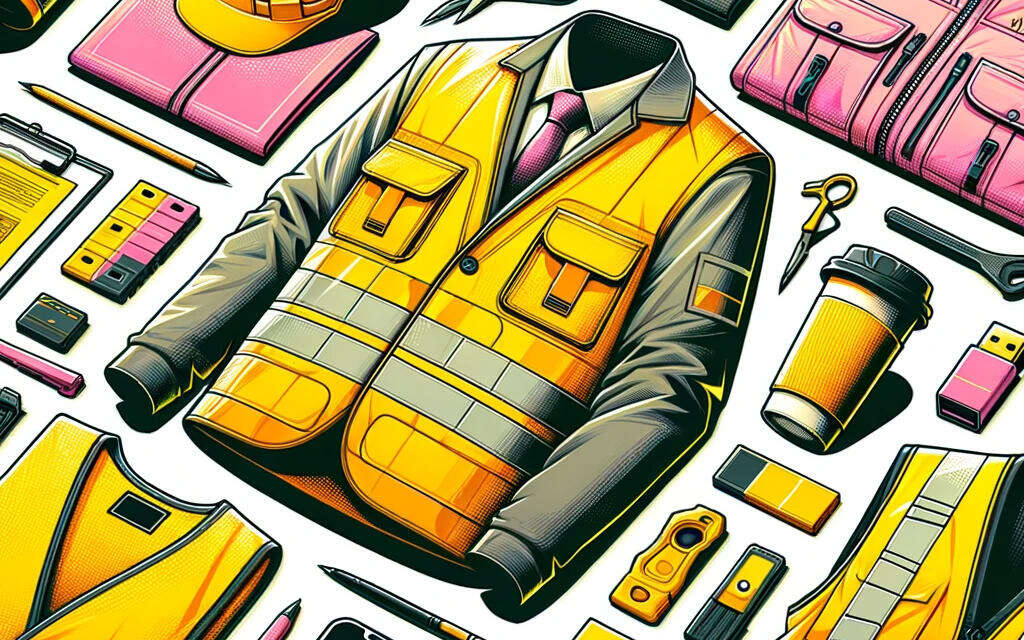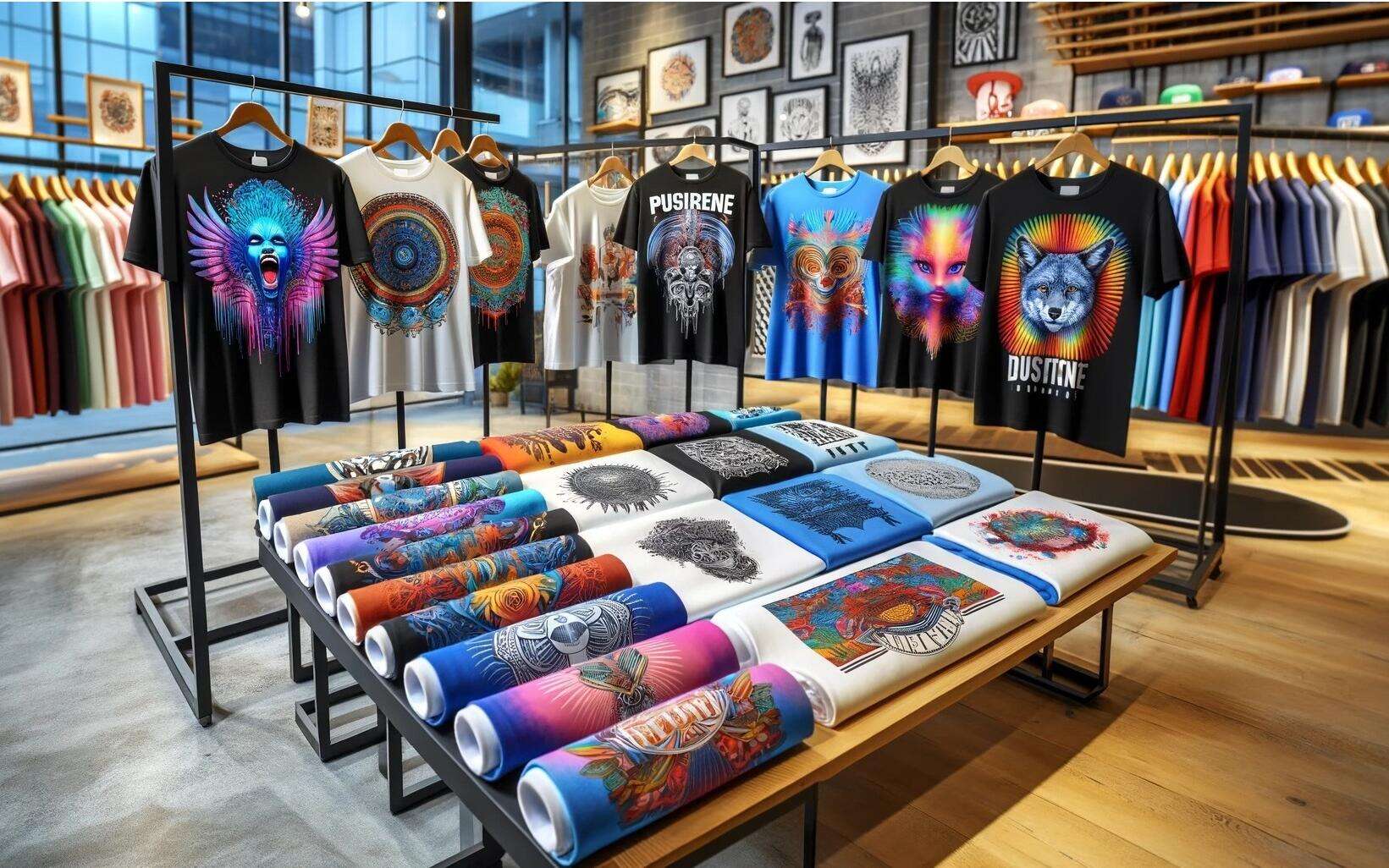Introduction: The Dawning of a New Retail Era
In recent years, the retail landscape has undergone a significant transformation, pivoting from traditional brick-and-mortar establishments to a more digitised realm. This shift towards online platforms had been gradual, but the events of 2020 served as a catalyst, accelerating the move at an unprecedented pace. As global challenges emerged, businesses found themselves at a crossroads. Many faced the daunting task of either adapting swiftly to the digital tide or risking obsolescence.
Yet, amidst these challenges, a silver lining became evident. The resilience and adaptability demonstrated by businesses, both large and small, were nothing short of commendable. They showcased an innate ability to evolve, restructure, and thrive even in the face of adversity. This evolution is reminiscent of our own journey at "Time for Designs." Starting out amidst the digital age's peak in 2016, we've seen firsthand the transformative power of adaptation. Just as the world shifted gears in 2020, so did we, expanding our horizons beyond web design to become a hub of creativity and printing excellence in Cashel Co. Tipperary.
The Pre-Digital Retail Era: A Nostalgic Glimpse into High Street's Heyday
Before the advent of e-commerce and digital platforms, traditional retail reigned supreme. Picture this: bustling high streets lined with independent shops, each with its own unique charm. Shoppers would meander from one store to the next, relishing the tactile experience of browsing through goods, engaging in leisurely banter with shopkeepers, and soaking in the palpable atmosphere of community.
These were the golden days of retail – a time when shopping was not just a transaction, but an experience. Families would make an outing of it, perhaps followed by a delightful stop at a local café. The air was filled with anticipation, especially during festive seasons, as window displays transformed into enchanting scenes, beckoning passersby to take a peek inside.
However, even in its prime, brick-and-mortar retail was not without its challenges. One of the primary hurdles was the limitation of physical space. Shops were constrained by their square footage, dictating how much stock they could hold and display. This often meant that product variety was limited, and replenishing stock took time.
Additionally, traditional retailers grappled with high overheads. Rent for prime locations, utilities, and staffing costs all weighed heavily on their bottom line. Without the expansive reach of the internet, these shops were largely dependent on local footfall. Any changes in local demographics, economic downturns, or shifts in consumer behaviour could have a profound impact on their sales.
Moreover, marketing and advertising were more localised and often more expensive. Without digital analytics, understanding customer preferences and behaviours was more intuition-based, making it challenging to tailor offerings or predict trends with precision.
In essence, while the pre-digital retail era had its charm and allure, it also presented a unique set of challenges that brick-and-mortar establishments had to navigate, laying the groundwork for the impending digital revolution.
The Onset of E-commerce: From Shopfronts to Webfronts
As the dawn of the 21st century approached, a new player emerged on the retail scene, poised to redefine the way we shop: e-commerce. This digital evolution, driven by rapid technological advancements, marked the beginning of a shift from physical shopfronts to virtual webfronts. E-commerce platforms, from niche startups to behemoths like Amazon and eBay, began cropping up, offering consumers a novel way to browse and purchase goods from the comfort of their homes.
Yet, with every innovation comes resistance. The initial rise of e-commerce was met with a palpable sense of hesitation from traditional retailers. Many viewed it as a fleeting trend, doubting its potential to match the experience and trustworthiness of brick-and-mortar stores. There were concerns about security, the impersonal nature of online shopping, and the perceived complexity of setting up an online presence. The tactile experience of feeling a product, the immediacy of taking it home post-purchase, and the human interaction of in-store shopping were all aspects that e-commerce, in its infancy, struggled to replicate.
However, as e-commerce platforms matured, it became evident that they brought a plethora of advantages to the table, some of which traditional retail could hardly compete with:
-
Wider Reach: No longer confined by geographical boundaries, retailers could now cater to a global audience. A shop based in London could effortlessly serve a customer in Sydney, breaking down the barriers of distance.
-
24/7 Availability: The constraints of store opening hours were obliterated. Consumers could browse and shop at any hour, be it during a lunch break or in the wee hours of the morning.
-
Personalised Marketing: With the advent of digital analytics, e-commerce platforms could gather insights into customer behaviours, preferences, and purchasing patterns. This data-driven approach allowed for highly tailored marketing strategies, presenting consumers with products and deals that matched their interests and needs.
The e-commerce wave was not just about convenience; it was about expanding possibilities. It offered a new paradigm of retail, blending the vastness of choice with the ease of access. And while traditional retailers may have been slow to jump on the bandwagon, the undeniable benefits of e-commerce eventually led many to integrate it into their business models, marking the beginning of a new retail era.
Benefits of the Digital Shift: Embracing the Future of Retail
The transition from traditional brick-and-mortar establishments to digital platforms heralded a new era in the retail sector, bringing with it a host of benefits that have significantly altered the shopping landscape.
-
Increased Accessibility: One of the most salient advantages of e-commerce is its unparalleled accessibility. Gone are the days when customers were bound by the opening hours of their local shops. With e-commerce, shopping is a round-the-clock affair. Whether it's a midnight impulse buy or an early morning grocery order, the digital realm caters to every whim, anytime, anywhere. Moreover, geographical constraints have become a thing of the past. A boutique in Brighton can serve a fashion enthusiast in Bangalore with the same ease as a local, creating a truly global marketplace.
-
Data-Driven Decisions: In the digital age, information is power. E-commerce platforms have the ability to meticulously track consumer behaviour, from browsing patterns to purchase histories. This wealth of data allows retailers to make informed decisions, refining their product offerings, pricing strategies, and promotional campaigns to better align with customer preferences. No longer reliant on mere intuition or broad demographic insights, retailers can now harness the precision of analytics to drive targeted marketing and boost sales.
-
Personalised Shopping Experience: With the insights gleaned from data analytics, e-commerce platforms can craft a shopping experience that's uniquely tailored to each user. Imagine logging onto a website and being greeted with product recommendations that align perfectly with your tastes, or receiving promotional offers that resonate with your past purchases. This level of personalisation enhances customer engagement, fostering loyalty and encouraging repeat business.
-
Cost Efficiency: The shift to digital has brought with it notable economic advantages. Without the need for physical storefronts, retailers can drastically reduce overheads associated with rent, utilities, and in-store staff. Additionally, the streamlined nature of online operations often translates to efficiency gains in inventory management and order fulfilment. These cost savings can, in turn, be passed onto consumers in the form of competitive pricing, or reinvested into the business to fuel growth and innovation.
In essence, the digital shift has not only redefined the way we shop but has also presented retailers with tools and opportunities to enhance their operations, reach a wider audience, and deliver unparalleled value to consumers.
Challenges of the Digital Transition: Navigating the Rough Seas of E-commerce
While the shift towards e-commerce brought with it numerous advantages, it wasn't without its challenges. Retailers, both seasoned and newcomers, found themselves grappling with a set of unique obstacles in the digital realm.
-
Technical Hurdles: The leap from a physical shopfront to a digital platform is no small feat. Setting up an online store requires a blend of technical know-how and aesthetic sensibility. From domain registration and hosting considerations to web design and user experience optimisation, the technical aspects can be daunting. Furthermore, the digital landscape is ever-evolving. With technological advancements and changing consumer preferences, maintaining an up-to-date, glitch-free online presence requires continuous effort, investment, and adaptability. And let's not forget the intricacies of integrating secure payment gateways, managing inventory in real-time, and ensuring seamless order fulfilment.
-
Competitive Landscape: The barrier to entry in the e-commerce space is notably lower than that of traditional retail. Without the overheads of physical shops, many entrepreneurs have ventured into online retailing. As a result, the digital marketplace has become saturated in many niches. Retailers now find themselves vying for consumer attention amidst a sea of competitors, ranging from established giants to innovative startups. Standing out, carving a niche, and ensuring brand recall amidst this clutter is a formidable challenge.
-
Customer Trust: In the absence of face-to-face interactions, building trust online presents its own set of challenges. Consumers are often wary of new e-commerce platforms, with concerns ranging from the quality of products to the security of their personal and financial data. Ensuring robust data protection protocols is paramount, not just for regulatory compliance but also for building and maintaining customer trust. Moreover, with the anonymity of the internet, businesses have to work doubly hard to establish credibility. Transparent return policies, genuine product reviews, and responsive customer service are just a few ways to foster trust in the digital space.
While the promise of e-commerce is alluring, it's evident that success in this domain requires a balanced approach. Retailers must not only capitalise on the opportunities presented by the digital shift but also navigate its challenges with foresight and resilience.
The Hybrid Model – Melding the Best of Both Worlds: Brick & Click
In the ever-evolving landscape of retail, one model has emerged as particularly compelling: the hybrid model. This approach seeks to integrate the tangible allure of brick-and-mortar shops with the expansive reach and convenience of online platforms, offering consumers a holistic shopping experience.
-
The Imperative of Integration: The decision to shop offline or online isn't binary for most consumers. They might relish the experience of physically browsing through a shop, feeling the texture of products, and getting immediate answers to their queries. Yet, the same consumer might value the convenience of reordering a liked product online, availing of exclusive web-only deals, or reading detailed product reviews before making a purchase. By integrating both offline and online experiences, retailers can cater to a broader spectrum of consumer preferences, ensuring they remain engaged and loyal irrespective of the shopping mode they choose.
-
Exemplars of the Hybrid Approach: Several retailers have successfully harnessed the power of the hybrid model. Click-and-collect services, where consumers order online and pick up from a physical store, have gained immense popularity. Brands like John Lewis and Argos in the UK have effectively employed this strategy, allowing them to drive online traffic while also increasing footfall in their physical stores. Pop-up shops for primarily online brands or digital-first brands maintaining a few flagship physical stores are other examples of this blended approach, ensuring brand visibility and tangible presence.
-
The Pivotal Role of Web Design: Given your expertise in web design, it's worth highlighting its crucial role in the hybrid model. A well-designed website acts as a bridge between the physical and digital realms. It should reflect the brand's in-store ethos, ensuring consistency in consumer experience. Features like virtual try-ons, chatbots mimicking in-store assistants, or immersive 360-degree product views can make the online browsing experience as tactile and engaging as an in-store visit. Moreover, a seamless website design ensures that transitioning from online browsing to in-store purchases (or vice versa) is intuitive, maintaining continuity in the customer journey.
The hybrid retail model underscores the fact that in the diverse world of retail, it's not about choosing between brick or click. It's about leveraging the strengths of both, creating a cohesive, integrated experience that resonates with today's discerning consumer.
Case Study: Time for Designs – Navigating the Evolution from Screens to Fabrics
In the dynamic world of digital innovation and design, few stories are as emblematic of adaptability and growth as that of "Time for Designs." Nestled in the picturesque locale of Cashel Co. Tipperary, our journey offers insights into the changing tides of the industry and how a nimble approach can pave the way for success.
-
The Genesis – A Web-Centric Vision: Our inception in 2016 was firmly rooted in the digital sphere, with a focus on crafting memorable online experiences through web design. At a time when the digital age was at its zenith, our mission was clear: to create digital platforms that were not only functional but also aesthetically captivating. Through our designs, we aimed to give brands a distinctive voice in the crowded online space, ensuring they stood out and resonated with their target audience.
-
The Pivot – Embracing Print: As the world underwent seismic shifts in 2020, we too felt the ripples. Recognising the evolving needs of our clientele and the broader market, we took a bold step. Transitioning from a purely web-centric model, we expanded our horizons to include a diverse array of printing solutions. From sublimation to large format printing, digital prints to clothing prints, our offerings grew manifold. In doing so, we transformed from a digital design agency to a holistic hub of creativity and print innovation.
-
Lessons, Challenges, and Adaptations: The transition was not without its hurdles. Diversifying into print meant acquainting ourselves with new technologies, understanding the nuances of different printing methods, and ensuring the same high quality we were known for in the digital space. One significant lesson was the importance of staying true to our core values, irrespective of the medium. Whether it was a website design or a fabric print, our commitment to excellence remained unwavering. Challenges, such as aligning our digital designs with print realities or ensuring consistency across various print mediums, were met with a problem-solving approach. Through continuous learning, collaboration, and a dash of innovation, we adapted and thrived in the changing landscape.
Today, "Time for Designs" stands as a testament to the power of adaptability and vision. Our journey from screens to fabrics symbolises the endless possibilities that await when one is willing to evolve, learn, and embrace change.
Future Predictions: Charting the Course of Tomorrow's Retail Landscape
The retail sector, both traditional and digital, is in a constant state of flux, driven by technological innovations, consumer preferences, and global trends. As we gaze into the crystal ball, certain themes and trajectories emerge, painting a picture of the future of retail.
-
Virtual Reality (VR) & Augmented Reality (AR) – Immersive Shopping: The realms of VR and AR are set to redefine the online shopping experience. Imagine donning a VR headset and walking through a virtual store, picking up products, and examining them as if you were there in person. Or using AR on your mobile device to visualise how a piece of furniture would look in your living room before making a purchase. These technologies promise to bridge the sensory gap often associated with online shopping, offering consumers an immersive, tactile experience from the comfort of their homes. Retailers who harness the power of VR and AR stand to gain a competitive edge, offering enriched, interactive experiences that resonate with the tech-savvy consumer of tomorrow.
-
Sustainability – Green Retailing: The clarion call for sustainable practices has never been louder. Consumers are becoming increasingly conscious of their ecological footprint, seeking out brands and products that align with their values. In the retail sector, this translates to eco-friendly packaging, sustainable sourcing, energy-efficient operations, and transparent supply chains. Even in the digital realm, considerations like energy-efficient web hosting or digital practices that minimise carbon footprints are gaining traction. Retailers who embrace sustainability not only contribute positively to the planet but also resonate with a growing segment of eco-conscious consumers.
-
Localised Global Reach – Glocalisation: In an interconnected world, retailers have the opportunity to cater to a global audience. However, with this expansive reach comes the challenge of offering a personalised, localised experience. Consumers across the globe seek products and experiences that resonate with their cultural, regional, and individual preferences. This concept of 'glocalisation' – thinking globally but acting locally – will be pivotal for retailers. Whether it's offering region-specific products, localised marketing campaigns, or tailoring online platforms to cater to regional languages and tastes, the ability to meld global reach with local relevance will be a defining trait of successful retailers in the future.
The future of retail promises to be a blend of technological innovation, ecological responsibility, and cultural sensitivity. Retailers who navigate this trinity adeptly stand to not only thrive but also redefine the very fabric of the shopping experience.
Conclusion: The Dynamic Tapestry of Retail – A Journey of Change and Evolution
The world of retail, with its vibrant hues and intricate patterns, resembles a tapestry that's continually being woven. Each thread, be it technological innovation, cultural shifts, or global trends, adds depth and dimension to this vast landscape. From the bustling high streets of yesteryears to the digital marketplaces of today, retail has undergone transformations that few sectors can parallel.
Central to this ever-evolving narrative is the spirit of adaptability. In an industry as dynamic as retail, the ability to pivot, to embrace change, and to see challenges as opportunities, has been the hallmark of those who've thrived. Whether it's a global event reshaping consumer behaviours or a technological breakthrough redefining shopping experiences, the retailers of tomorrow will be those who nimbly navigate these shifts.
Yet, adaptability alone isn't the panacea. It must be complemented by ceaseless innovation – a quest to offer something novel, something better. In a world inundated with choices, standing out requires not just quality, but also creativity. From immersive VR shopping experiences to eco-friendly packaging solutions, innovation will be the beacon guiding retailers towards uncharted territories.
At the heart of all these changes, however, lies the consumer. A truly successful retail model, irrespective of its digital or physical nature, will always be one that's customer-centric. Understanding their needs, anticipating their desires, and forging genuine connections are the cornerstones of lasting retail success.
As we pen down these reflections, we invite you, our readers, to join the conversation. Share your thoughts, recount your experiences, and let's together weave the next chapter in the rich tapestry of retail. In this journey of exploration and discovery, every voice adds value, fostering a sense of community and collective growth.
Embark on a Creative Voyage with Time for Designs
As we journey through the multifaceted world of retail, from its rich history to its promising future, we recognise the role that design and innovation play in shaping memorable experiences. At "Time for Designs," we're poised at the crossroads of creativity and technology, offering a suite of services tailored to breathe life into your visions.
Are you keen to explore the vibrant world of sublimation, where designs seamlessly meld with materials, creating products that are both visually striking and tactilely delightful? Or perhaps you're intrigued by the precision and versatility of digital printing, where every pixel is rendered with impeccable clarity.
Beyond the realm of print, our expertise spans a gamut of creative endeavours. Whether you're an entrepreneur with a novel product idea, a brand aiming to leave an indelible mark, or a creative soul brimming with ideas, we're here to partner with you. Our tools, expertise, and passion, combined with your vision, can craft narratives that resonate and inspire.
So, why wait? Dive into our diverse range of services and discover the myriad possibilities that await. Let's collaborate, innovate, and together, create masterpieces that stand the test of time. With "Time for Designs" by your side, the canvas is vast, and the potential, limitless.








Comments (0)
Add a Comment